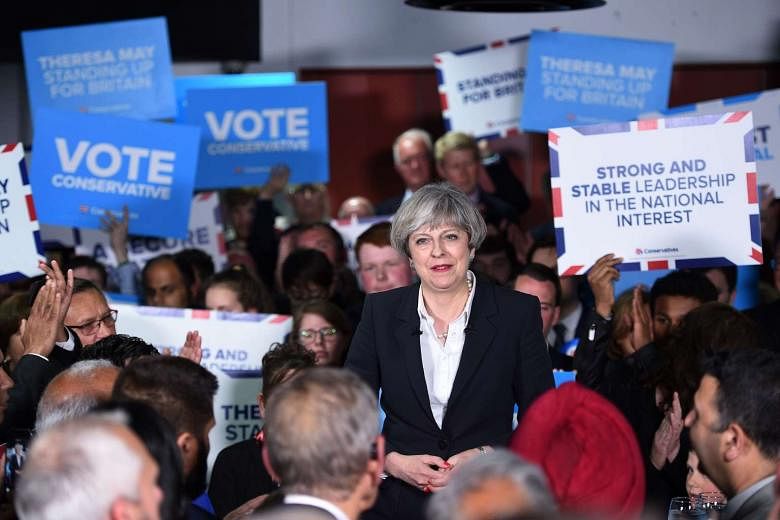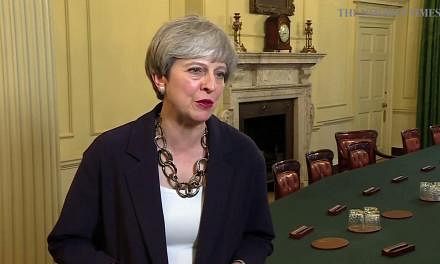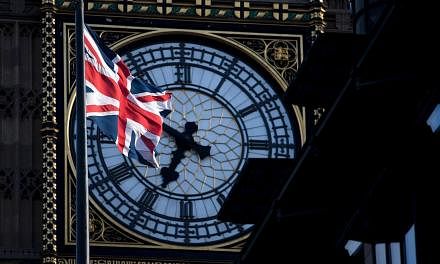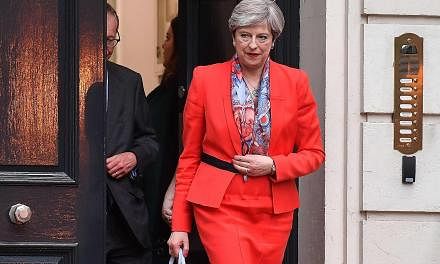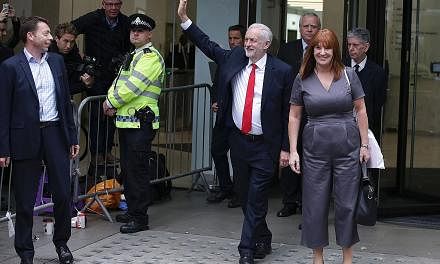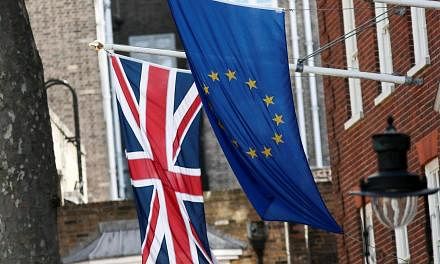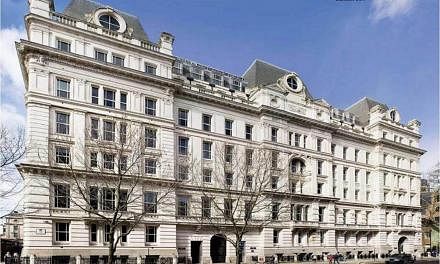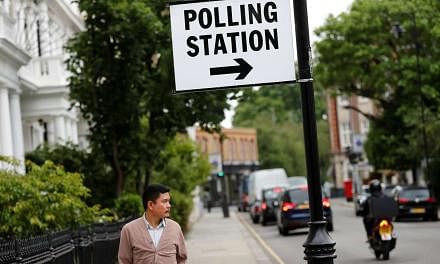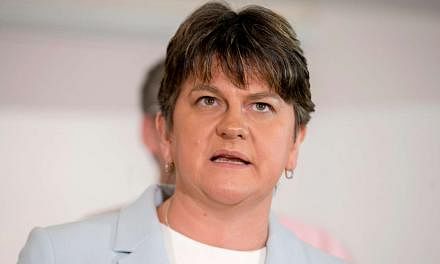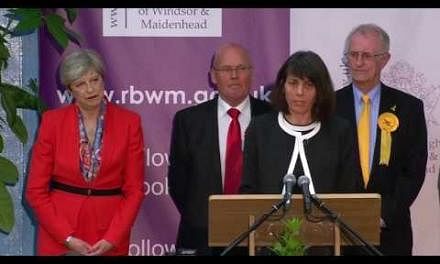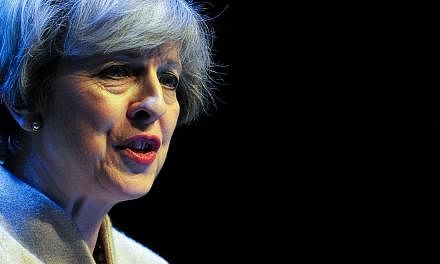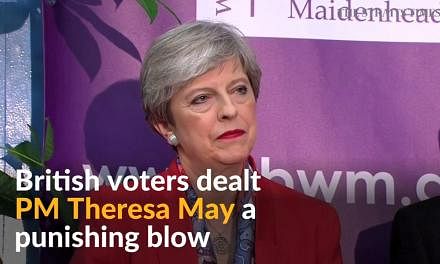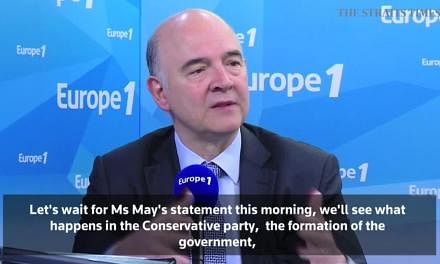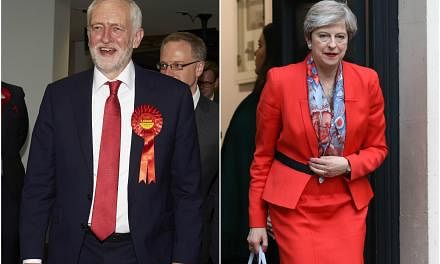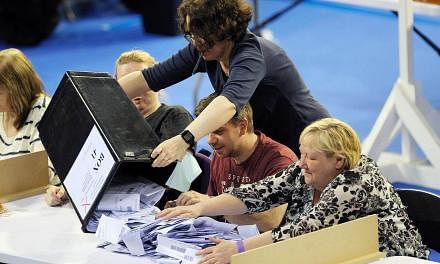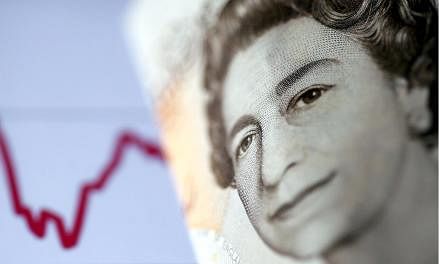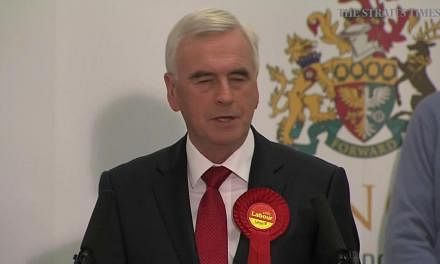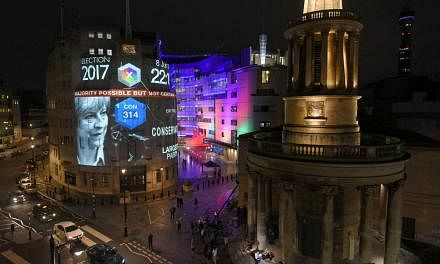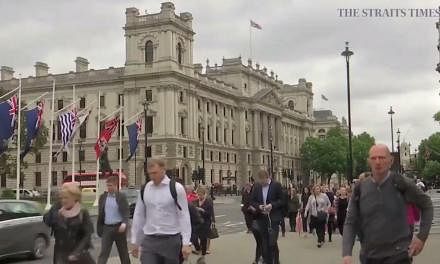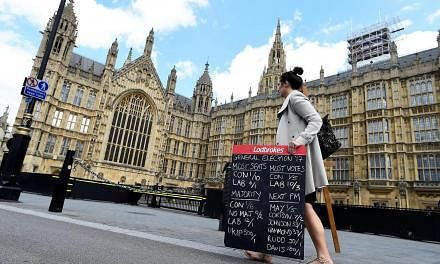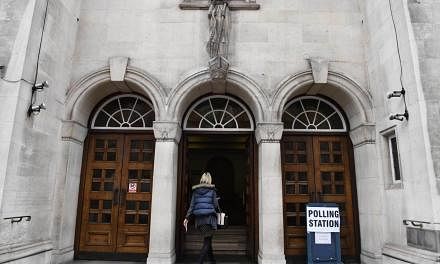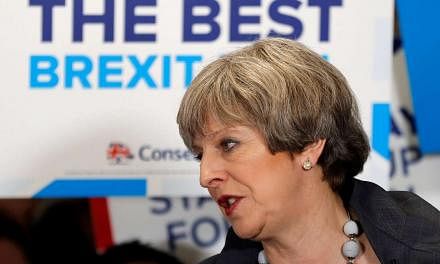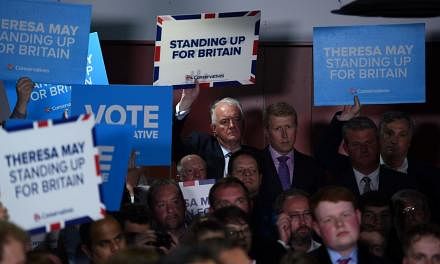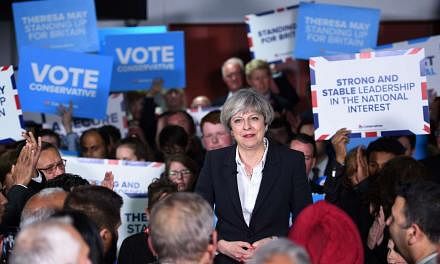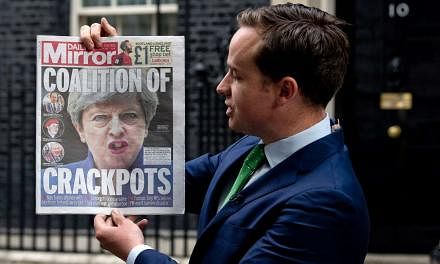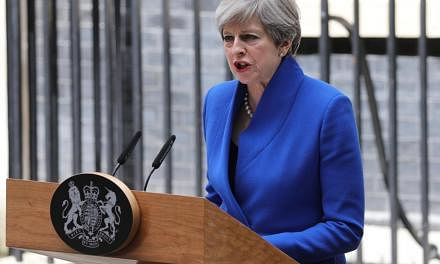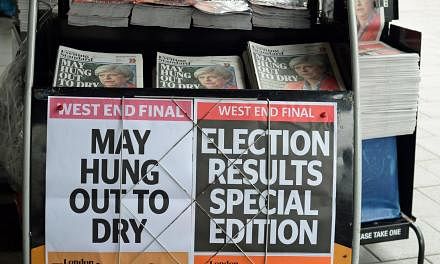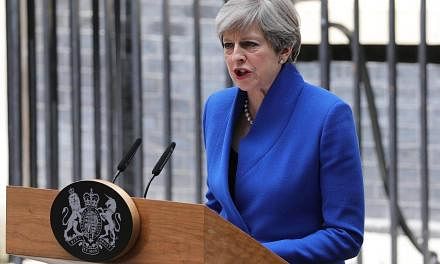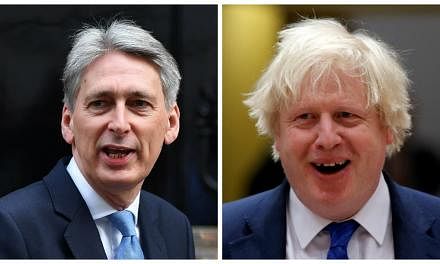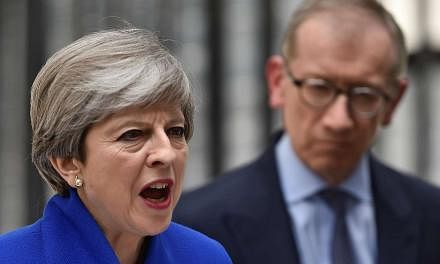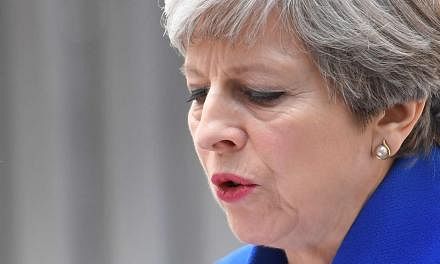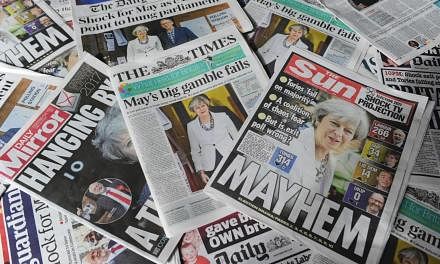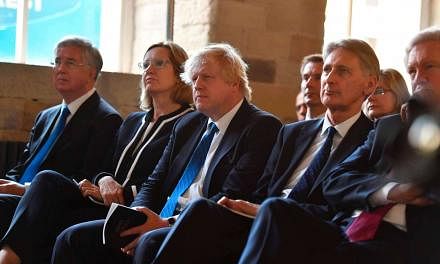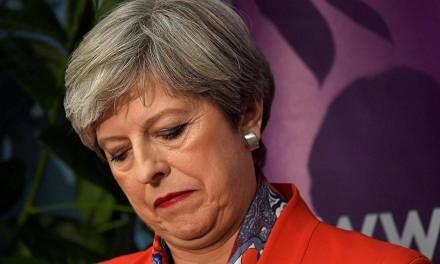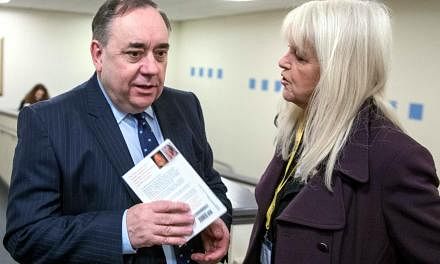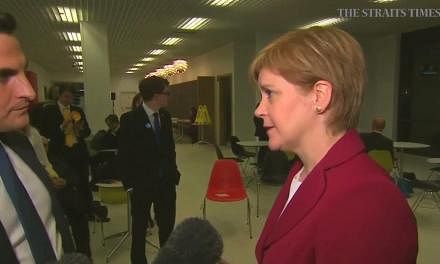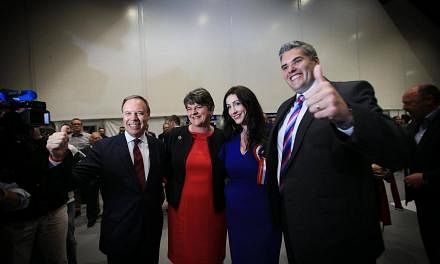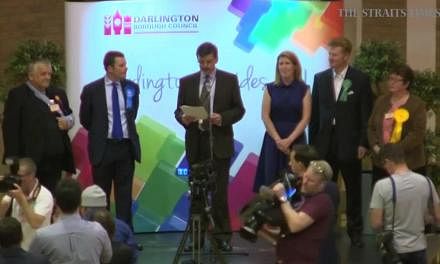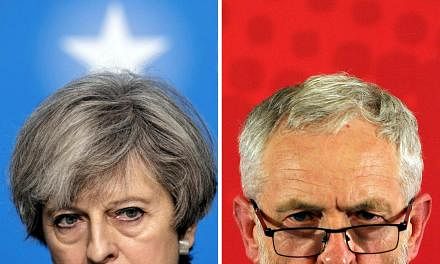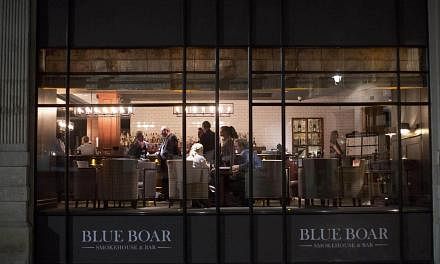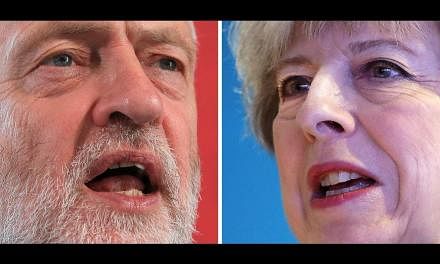LONDON (BLOOMBERG) - Polling stations will open across Britain on June 8 from 7am to 10pm (2pm Thursday to Friday 5am, Singapore time).
The general election is actually 650 separate votes in 650 individual districts. Most seats won't change hands, and the outcome of only about 100 will determine the final tally for Theresa May's Conservatives and Jeremy Corbyn's Labour Party.
Last time round, it was the result from Nuneaton in the English Midlands at 1.50am British time that set the stage for David Cameron's eventual victory - not only did Ed Miliband's Labour fail to take a must-win bellwether seat, the Tories actually increased their share of the vote.
The projected declaration times here are from a list compiled by the Press Association newswire and they're only estimates. If the result is close in any given district, a recount could delay the announcement.
The key to interpreting these results as they come in is the concept of swing - the shift in votes from one party to another compared with the previous election in 2015 - which is used to estimate how many seats might change hands.
At the moment, the polls are very mixed. The most favourable for May suggest a swing of about 2.5 percentage points to the Tories - which might see them capturing 30 or so Labour seats and increasing their majority to about 75.
The least favourable, with a swing of about 1.5 points to Labour, sees the Conservatives losing about seven seats but just about holding on to their majority.
10pm British time (5am Friday, Singapore time)
Voting ends across Britain and broadcasters release their exit poll. Last time, it gave the Tories 316 seats, short of a majority, to Labour's 239.
The Tories actually ended up with 331 and Labour 232. At some point during the night, once enough results are in, the number-crunchers for TV stations - including Strathclyde University's John Curtice - will produce projections of the final result.
11pm

The northeastern English city of Sunderland runs a slick operation to ensure its count finishes first, and is scheduled to announce results before midnight.
These should be safe Labour seats - no Tory has won here since 1959 - so the interest will be in changes to vote shares as a pointer to later results.
Labour had more than half of the vote in all three Sunderland seats in 2015, while the right-wing UK Independence Party (UKIP) took about 20 per cent. With UKIP collapsing in the polls, have its votes gone to Corbyn's party or May's?
It's worth noting that YouGov polling, during the campaign, showed the biggest regional swing to the Tories was in the northeast.
1am
The results from strongly pro-EU but Conservative-held Battersea and Putney are scheduled to give the first indication of how the election played out in London, where the Tories have found it difficult to take votes from Labour. We should now see a trickle of results coming in but, unless there's a major shock, none of these early seats is likely to change hands.
1.30am
This is when things get interesting. We're due to get three results in Labour-held seats about now that will show whether the Tories are making gains.
In Wrexham, in north Wales, the Conservatives need a swing of 2.8 percentage points from Labour. A gain would suggest they're on course to increase their majority to more than 50 seats.
Back in the northeast, the Tories need a 3.8-point swing in Darlington - a win there might indicate they're on course for a majority of about 75 seats.
Also due up is Tooting, in south London, which is potentially winnable for the Tories on a swing of 2.7 points from 2015. It was a district where an estimated 75 per cent voted to stay in the EU, so could also indicate how Brexit has affected voting.
2am
The pace starts to pick up; we should have about 50 results by now. If the Tories are gaining seats, there will be further evidence of the scope of their success - a win in Bury South, in Greater Manchester, where they need a 5.2-point swing, might point to a majority of more than 100.
But there are targets now for Labour too - including just next door in Bury North, where fewer than 200 voters need to switch from the Tories for the opposition party to regain the seat.
Labour needs a 2-point swing in Peterborough, in eastern England; a win here would indicate there might be a hung Parliament, where no party has a majority.
The first results will also be coming in from Scotland, where the Tories have been gaining support from First Minister Nicola Sturgeon's Scottish National Party (SNP).
Angus, to the north of Dundee, is the Tories' 11th most-winnable seat north of the border, so may be out of reach. The Liberal Democrats are also seeking to win back Fife North East, which includes the university town of St. Andrews, from the SNP.
2.30am

Hartlepool is an ambitious target for the Conservatives in the northeast; it's only the 65th most-winnable for the party on a swing of 7.4 points.
Labour targets from the Tories include the very marginal district of Vale of Clwyd, in north Wales, and Warwickshire North, in the Midlands, where the opposition party needs a 3.1-point swing.
The result in Labour leader Jeremy Corbyn's Islington North constituency in London is due about now; his victory speech (it's a very safe Labour seat) will no doubt be live on TV and may hint at information he's received from party activists at counts across the country.
3am
Getting toward peak results time now, at a rate of two a minute. The Tories will be looking for gains in winnable Labour districts across the country: both seats in Newport, in South Wales, a city where they last had a lawmaker elected in 1983, and two in Labour-leaning Coventry, in the West Midlands.
Stockton North, in the northeast, may also be a target on a 10.6-point swing after the Conservatives unexpectedly won the election for Tees Valley regional mayor last month.
Ealing Central & Acton is theoretically the most winnable London seat for the Tories, but it voted heavily to remain in the EU so may stay Labour. On the other side of the city, Dagenham & Rainham recorded the highest Leave vote in London, so may be in play for the Conservatives, despite the 8.5-point swing needed.
There are three big Tory targets in Scotland about now - the latest Scottish poll suggested the Conservatives will gain six seats from the SNP, and Perth & Perthshire North, Moray and Renfrewshire East are within that range.
Not only did Moray score the highest Leave vote in Scotland, it's the seat of the SNP's deputy leader, Angus Robertson.
Liberal Democrat Jo Swinson needs only a 2-point swing to win back Dunbartonshire East from the SNP, but if the Lib Dems are having a bad night, their leader Tim Farron may be vulnerable to a Tory surge in Westmorland & Lonsdale, in northwest England.
3.30am
More than a third of results will be in by now. If the Conservatives are on a roll, they could take Sedgefield, in the northeast, which needs an 8.8-point swing from Labour; it's former Prime Minister Tony Blair's old constituency. In London, Ilford North, Enfield North and Westminster North are all vulnerable to smallish swings to the Tories.
4am
This will be the busiest time, but the shape of the new Parliament should already be fairly clear, unless it's really close. If it is, there are some key results to look for.
Labour targets include Gower, in South Wales, their most winnable target overall, and Croydon Central and Hendon, their most winnable in London, as well as both districts in Plymouth, where May campaigned this week. The Tories will have their sights on Labour seats in the Midlands, including Walsall North and Newcastle-Under-Lyme.
It's make-or-break hour for the pro-EU Liberal Democrats. Former Business Secretary Vince Cable is seeking to win back Twickenham, in southwest London, from the Tories; next door in Kingston & Surbiton, former Energy Secretary Ed Davey is attempting a similar feat.
In Richmond Park, Sarah Olney is bidding to retain the district she won in a by-election last year, while in inner London, Simon Hughes is aiming to wrest his old Bermondsey constituency back off Labour.
The pro-EU Tory seat of Bath - another May campaign stop this week - is a target, as is SNP-held Edinburgh West. But the Lib Dems are vulnerable to losses to the Conservatives too, in Southport, in northwest England, and Carshalton & Wallington, in London.
4.30am
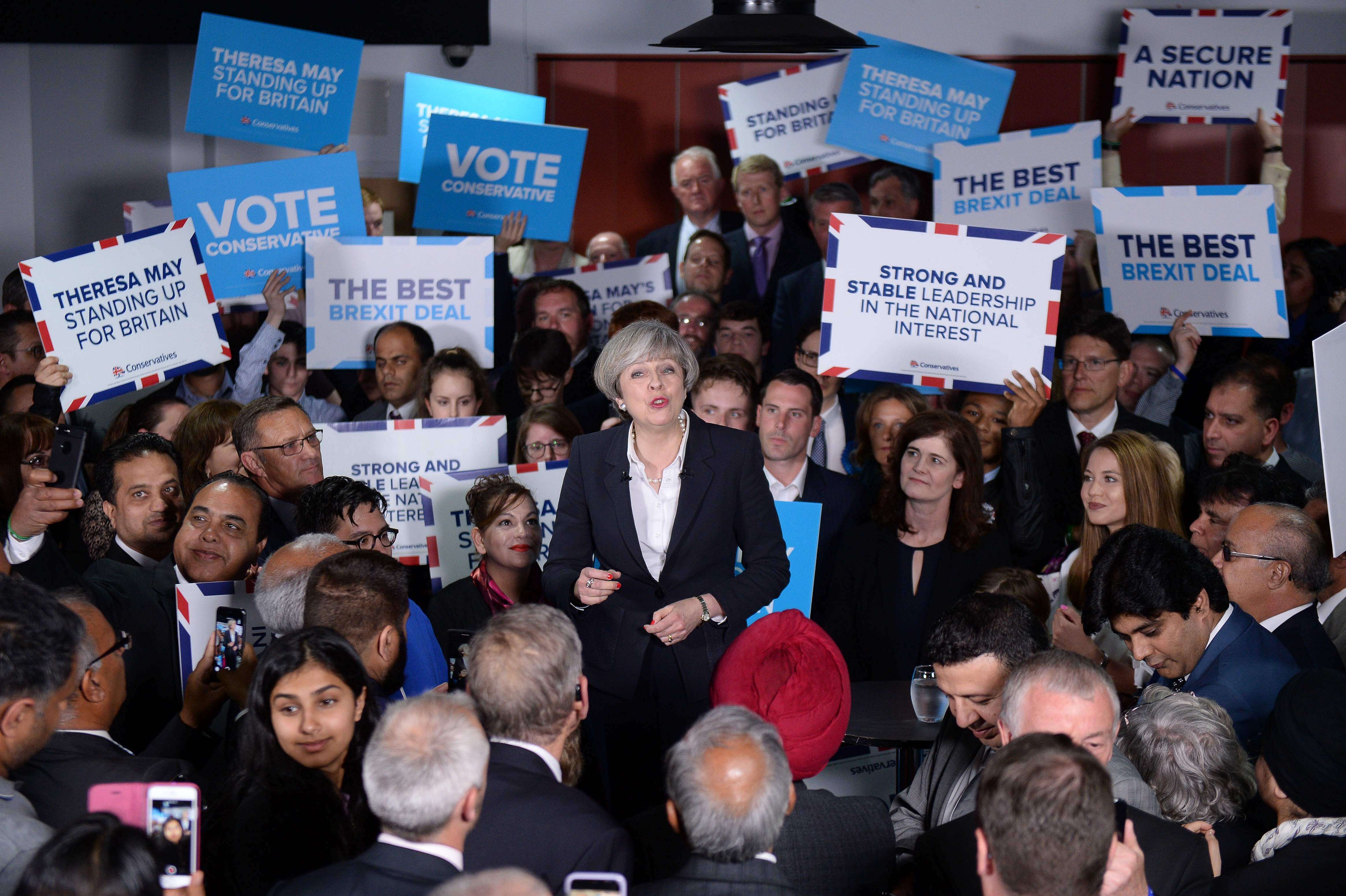
We should have more than two-thirds of the results in by about now and May will speak in her Maidenhead constituency, west of London, after the result there is announced.
Key marginals include Wolverhampton South West, in the West Midlands, where the Tories need just a 1-point swing.
Former Liberal Democrat leader Nick Clegg may be under pressure from Labour in Sheffield Hallam.
5am
If it's still going down to the wire, we're due results from some of the 10 most-winnable Labour-held Tory targets: City of Chester and Wirral West, in northwest England, Halifax, in Yorkshire, where May launched the Tory manifesto, and Brentford & Isleworth, in west London.
Bristol West is the Greens' number one target for a second Commons seat. UKIP leader Paul Nuttall is running in Boston & Skegness in eastern England.
6am
More than 600 results should be in by now. Derby North and Brighton Kemptown are must-win Tory-held targets for Labour. Berwickshire, Roxburgh & Selkirk is the most winnable Scottish district for the Tories.
If the result is clear, expect May or Corbyn to make a victory speech at some point over the next few hours.
7am

It's almost all over. There are only six more results set to trickle in over the course of the morning, with the final three not due until noon.
By that time, if we know who the prime minister is, the focus will switch to the first announcements of who's in the new Cabinet.
If it's a hung Parliament, the discussion will be about possible coalitions or deals to prop up a minority Tory or Labour administration.
